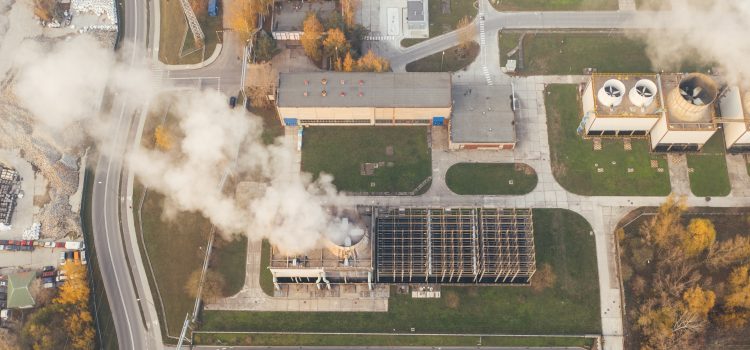
We’ve all heard of the term ‘carbon footprint’, but what does it actually mean? Simply put, it is the total amount of greenhouse gas emissions that an individual or company is responsible for. These emissions are created through everyday activities and practices, such as driving a car or running a business. The reality is that our carbon footprints are huge! As individuals and companies, we can have an immense environmental impact if we don’t take steps to reduce our carbon footprint. But how do we do this? In this blog post, we will explore the realities of our carbon footprint and how we can make small yet effective changes to lessen its effects on our environment.
Why should we care about reducing our environmental impact?
Climate change is one of the most pressing issues of our time, and reducing our environmental impact is a key way to help address it. There are many reasons why we should care about reducing our carbon footprint and other environmental impacts.
For one, climate change is already affecting us in major ways. Extreme weather events are becoming more common, costing lives and billions of dollars in damage. Climate change is also making it harder to grow crops and access clean water, which will impact food security and lead to even more poverty and suffering.
In addition to the direct impacts of climate change, humans are also harming the environment in other ways that are less visible but still very damaging. We’re polluting the air with harmful chemicals, causing species extinction through habitat destruction, and depleting resources like forests and fresh water. All of these activities are contributing to climate change, making it harder for future generations to enjoy a livable planet.
Reducing our environmental impact is therefore essential for protecting both the planet and human health. There are many ways we can do this, from individual actions like recycling and conserving energy, to larger-scale changes like transitioning to renewable energy sources. Every little bit helps, so let’s all do our part to protect our planet for future generations.
How can we reduce our carbon footprint?
When we talk about reducing our carbon footprint, what we’re really talking about is reducing our reliance on fossil fuels. Burning fossil fuels releases greenhouse gases into the atmosphere, which trap heat and cause the Earth’s average temperature to rise. This global warming can lead to all sorts of problems, from more extreme weather events to rising sea levels. So what can we do to reduce our carbon footprint and help prevent these issues?
Here are a few things you can do to reduce your carbon footprint:
1. Drive less. Carpool, take public transportation, or ride a bike whenever possible.
2. Use energy-efficient appliances and light bulbs.
3. Reduce your overall energy consumption by turning off lights and electronics when you’re not using them.
4. Support renewable energy sources like solar and wind power.
5. Plant trees! Trees absorb carbon dioxide from the atmosphere and help combat climate change.
Transportation
When it comes to reducing our carbon footprint and environmental impact, transportation is one area where we can make a big difference. Here are some easy ways to reduce your emissions from transportation:
1. Walk or bike whenever possible. This is great for short trips around town or even just to the corner store.
2. Take public transportation. This is an easy way to reduce your emissions if you live in an area with good public transit options.
3. Carpool or ride share when possible. This is a great option for commuting to work or taking longer trips.
4. Drive a fuel-efficient vehicle. If you’re in the market for a new car, consider choosing one that gets good gas mileage.
5. Limit air travel as much as possible. Air travel is one of the most emissions-intensive forms of transportation, so it’s best to limit it to only when absolutely necessary.
Food consumption
When it comes to reducing our carbon footprint, what we eat is just as important as how we travel. The food we consume has a direct impact on the environment, from the way it’s grown or raised to how it’s transported and processed.
Eating less meat and dairy is one of the most effective ways to reduce your carbon footprint. Animal agriculture is responsible for a significant amount of greenhouse gas emissions, so cutting down on meat and dairy can make a big difference. If you do eat meat, choose options that have a lower environmental impact, such as chicken or fish.
You can also reduce your carbon footprint by eating more locally-grown and -produced food. Food that has to travel long distances uses more energy and emits more greenhouse gases. Support your local farmers and producers by buying from them whenever possible.
Finally, be sure to compost any food waste you generate. This helps keep organic matter out of landfills, where it decomposes and emits methane, a powerful greenhouse gas.
Home energy usage
There are a number of things we can do to reduce our home energy usage and, as a result, our carbon footprint. One of the most important things we can do is to invest in energy-efficient appliances. This not only saves us money on our energy bills, but also reduces the amount of energy required to run our households. Another way to reduce our home energy usage is to make sure that we are not wasting energy through poor insulation or by leaving lights and electronics on when they are not needed. Finally, we can switch to Renewable Energy sources such as solar or wind power. By taking these small steps, we can make a big difference in reducing our carbon footprint.
Recycling and waste reduction
It’s important to remember that recycling and waste reduction are not just about conserving resources – they also have a significant impact on reducing your carbon footprint.
Recycling helps to reduce the greenhouse gas emissions associated with the production of new materials, while waste reduction reduces the emissions associated with the disposal of waste in landfill sites.
There are a number of simple things you can do to reduce your waste and increase your recycling:
– Purchase products that have less packaging or that can be recycled
– Bring your own reusable bags when shopping
– Avoid buying disposable products where possible
– Compost food waste instead of throwing it away
– Recycle household items and electronics instead of throwing them away










